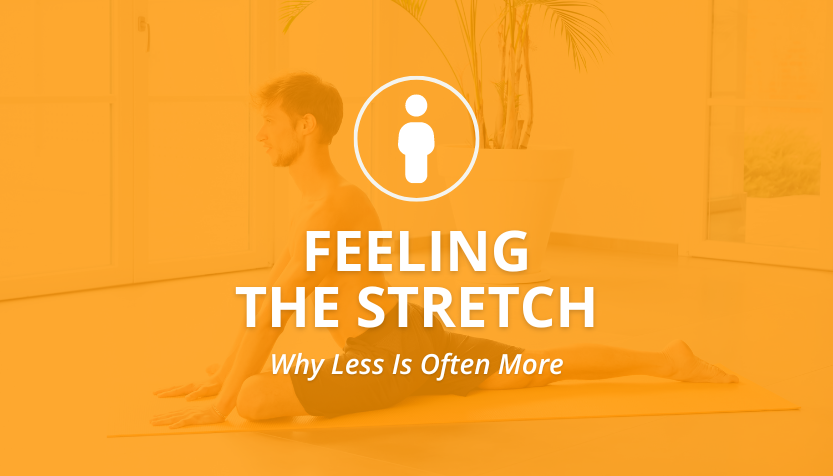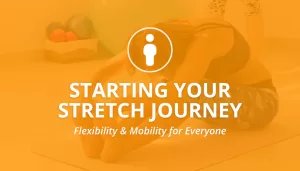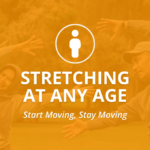Feeling the Stretch: Why Less Is Often More
- By Brett Schaffner
- In Stretching

In the world of stretching, it’s easy to get caught up in the pursuit of the perfect pose or the deepest stretch. However, chasing these sensations can lead to counterproductive outcomes. In this blog, we explore why tuning into your body’s signals and prioritizing stretches within your current range of motion are key to a sustainable and safe flexibility journey.
Understanding Sensation vs. Safety in Stretching
When it comes to stretching, the phrase “listen to your body” is more than just advice—it’s a necessity. Ignoring your body’s natural limits and striving for an ideal pose, like achieving a leg parallel in pigeon pose, often leads to overstretching and potential injury. Instead, the focus should be on feeling the stretch as it naturally unfolds, allowing your body to guide the intensity and depth.
The Importance of Feeling Our Limits
Adopting an approach that emphasizes our principles of Full Relaxation, Breathe to Relax, and Time Under Passive Tension helps create a setting where your muscles can elongate and relax without undue force. This practice goes beyond what might traditionally be considered “gentle”—it’s about tuning in to the subtle cues your body offers, which can vary significantly from one side to the other, and from one day to the next.
Understanding that each body’s reaction to stretching can differ drastically is key. What feels like a mild stretch to one person may be intense for another, and even your own experiences can differ from moment to moment. This variability underscores the importance of approaching each stretching session without preconceived notions of what it ‘should’ feel like based on others’ experiences or even your own past sessions.
Come to the mat with an open mind, ready to listen attentively to your body’s current state. By focusing on your personal limits and not on external comparisons or previous benchmarks, you allow yourself to engage with the stretch in the most beneficial and safe manner. This mindful approach ensures that you are performing deep work that respects your body’s needs, which might not always ‘feel’ intense but can have profound effects over time.
Avoiding the Pitfalls of Overstretching
Chasing intense sensations in stretching can often lead to overstretching, where muscles and connective tissues are pushed beyond their safe limits. This not only leads to discomfort and potential injuries but also counteracts the benefits of stretching by causing the body to tighten up in response to pain, rather than relax. Overstretching can strain not just muscles, but also tendons and ligaments, increasing the risk of long-term damage that can hinder flexibility progress and daily functioning.
It’s essential to recognize that effective stretching should result in a feeling of release and enhancement in motion, not in creating unbearable tension or pain. By respecting your body’s limits and gradually increasing your range of motion, you can achieve lasting improvements in flexibility and overall well-being, without the setbacks of overstretching.
Wrapping Up
Embracing a less intense, more mindful approach to stretching allows you to enjoy the benefits of flexibility training while protecting your body. Remember, effective stretching is about balance and tuning in to what your body needs, not what you think it should achieve.
Adopting a mindful approach to stretching helps ensure that your flexibility journey is not only effective but also sustainable and safe. Start listening to your body and feel the true benefits of stretching today.
Interested in personalize support?
If you're looking to enhance your stretching routine or need guidance on how to stretch properly without risking injury, consider signing up for one-on-one coaching sessions. Together, we can tailor a stretching program that respects your body’s limits and goals.
- Share:
You may also like

Starting Your Stretch Journey: Flexibility & Mobility for Everyone
- September 28, 2024
- by Brett Schaffner
- in Stretching

Stretching at Any Age: Start Moving, Stay Moving

Enhancers, Not Limiters: Embracing Props in Stretching


